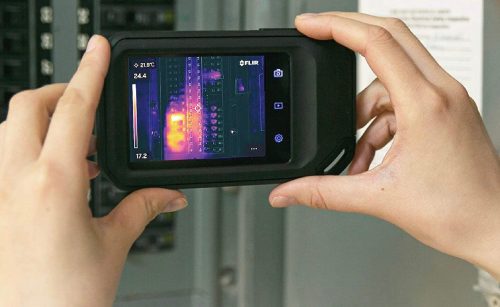
Thermal cameras are immensely helpful devices. Nonetheless, not all of them are the same.
When it comes to finding a good thermal camera – the right kind that will meet particular needs with quality offerings – then there are a number of key elements that should be looked for when trying to identify a suitable thermal camera. So let’s look now at what makes a good thermal camera? For a wide range of thermal cameras visit RS Components
Ensuring it actually provides thermal imaging (and not night vision instead)
Night vision devices and thermal cameras are commonly confused. This is because both can allow a user to obtain a greater vision of what is surrounding them in certain lighting conditions, in comparison to using the naked eye. But even if these two types of gadgets do have some overlapping offerings, they should not be misunderstood as the same. Ultimately, while a night vision device can provide vision at night, it does not do so via thermal imagery, and by the same token, although a thermal camera can pick up heat-emitting sources in its surrounds, this won’t provide vision across a whole viewpoint at night.
The presence of temperature measurement
It’s great to be able to detect heat sources with a thermal camera, but it can be even better to be able to detect them and see a precise measurement of what temperature is being emitted. A good thermal camera will be able to provide a precise reading in this regard, and this can be immensely helpful for those who require it. This said it is important to recognise – while unquestionably temperature measurement can be found in a good well-made thermal camera – in certain instances, this feature may not be required, and if a camera does not offer it that does not mean it’s by default lacking in quality in other ways. Ultimately, temperature measurement can be fantastic, but if it’s not required it’s not essential to buy a camera with it.
Does it have a suitable field of view?
Thermal cameras can be used in a variety of ways, but certain types can be more effective in pursuing particular tasks. For instance, a camera being utilised for measurements up close should have a wide-angle. By contrast, for work being done recording the temperature of elements at a distance, a telephone lens is better. As with temperature measurement, if a camera does not come with the ideal lens at the outset – keeping in mind that some cameras may offer multiple lenses – this doesn’t mean it’s a bad device at all, but just that it may not be ideal for the particular needs that a would-be user has in mind at the time.
What’s its thermal sensitivity like?
A great thermal camera should offer some real precision when it comes to providing temperature measurements. If intending to utilise a thermal camera for the measurement of sources with a very small variation in temperature, then having a camera with great and nuanced thermal sensitivity really is vital. By contrast, if measurements will occur only on sources where it’s necessary to measure the distinction between two temperatures at a great distance from one another then having a camera with such sensitivity may be welcome, but not critical.
Conclusion
A good thermal camera is truly a great thing to have. In order to find one, it’s essential to understand the difference between thermal cameras and night vision devices. Thereafter, to search for the presence of temperature measurements, a suitable field of view, and thermal sensitivity, as these are all excellent indicators of a quality thermal camera.




